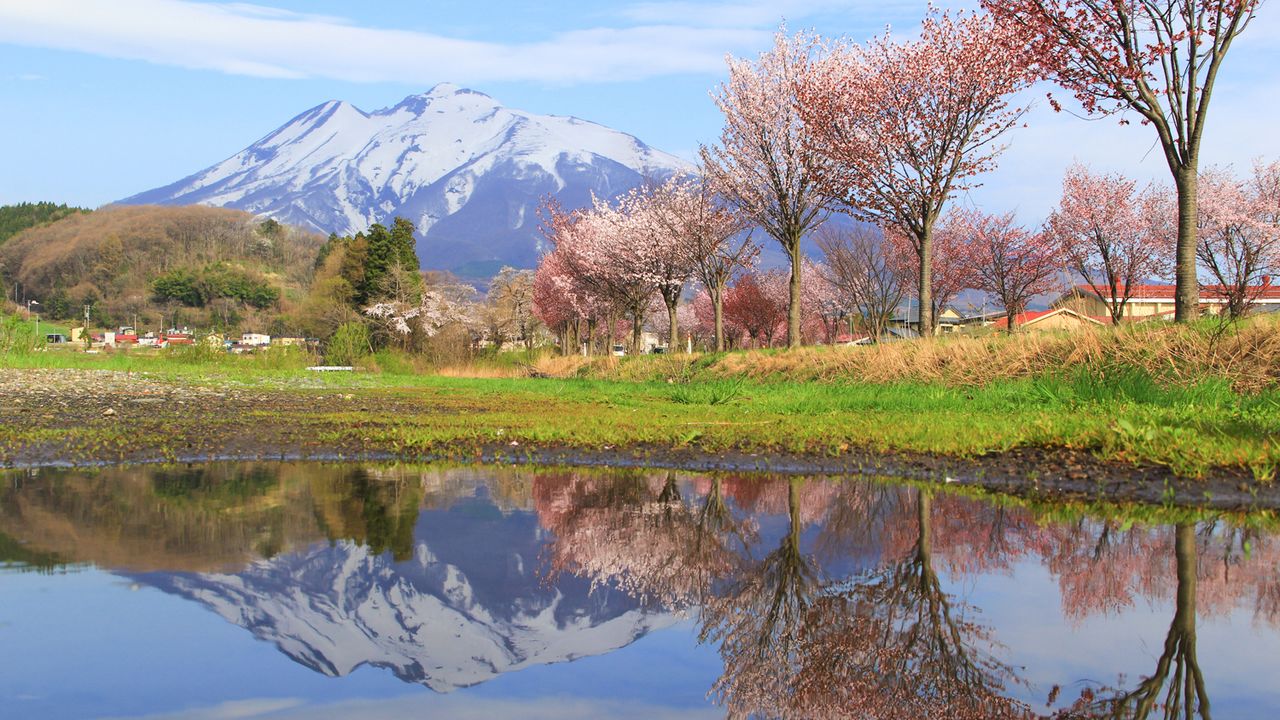
Hanami Season in Honshū’s Far North
Guideto Japan
Travel- English
- 日本語
- 简体字
- 繁體字
- Français
- Español
- العربية
- Русский
Mount Iwaki, Aomori: World-Beating Rows of Cherry Trees
Best viewing: Late April to early May
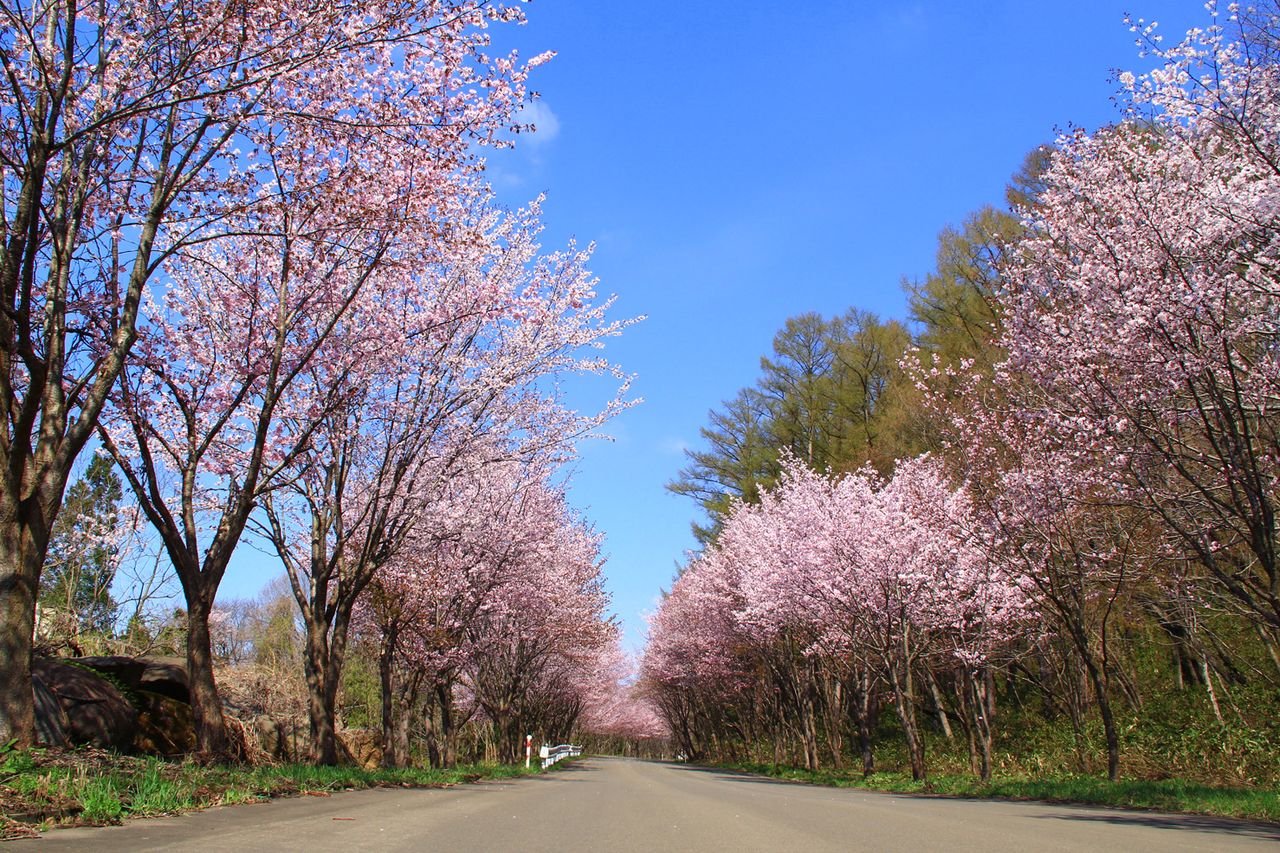
Sargent cherry trees in full bloom as far as the eye can see. (Photo courtesy of Iwakisan Tourist Association)
Located in Hirosaki, Aomori Prefecture, what locals claim to be the world’s longest stretch of cherry-lined roads brings a pink tinge over a distance of some 20 kilometers, leading to the base of Mount Iwaki. The project was originated by local residents, who strove to plant rows of sargent cherry trees right up to the foot of their treasured peak. As of 1995, 6,500 sargent cherry trees had been planted there over the course of a decade. This variety of cherry tree is often found in typically cold areas, and is known for the brilliant tints of its blossoms.
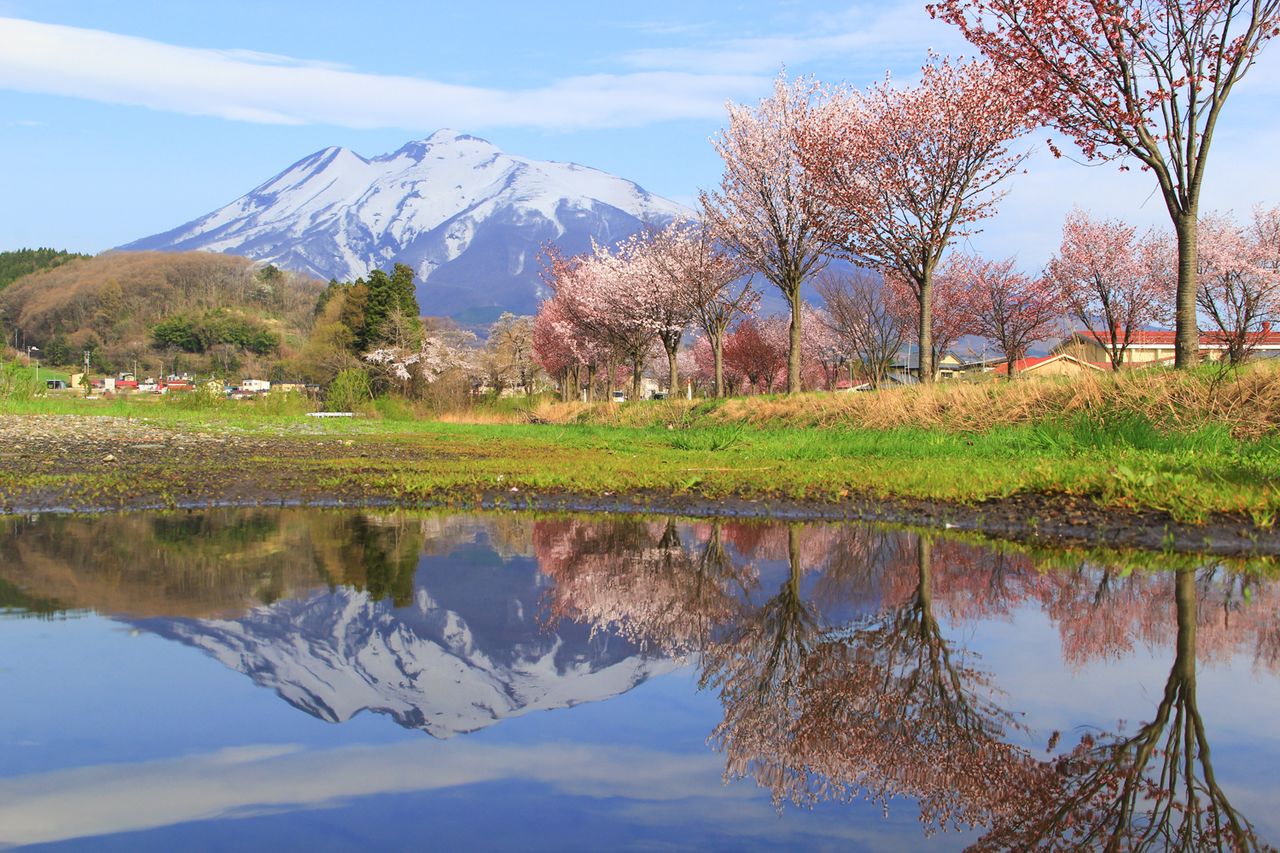
Snowcapped Mount Iwaki peers over the shoulder of some of the cherry trees. (Photo courtesy of Iwakisan Tourist Association)
The view of this long tree-lined path varies dramatically depending on one’s viewpoint. There are many amazing sights to be found here, some particularly lovely instances of which are the cherry tree rows set off by snowcapped Mount Iwaki in the background, the mountain and the cherry trees reflected together in the water, and Mount Iwaki seeming to be beneath an arch formed by the pink branches.
While best viewing is typically between late April and early May, blossom time varies depending on elevation, as the tree-lined route reaches right to the base of the mountain. The official website of the Iwakisan Tourist Association maintains up-to-date posts (in Japanese only) of the best viewing times at various locations. Check there before you go.
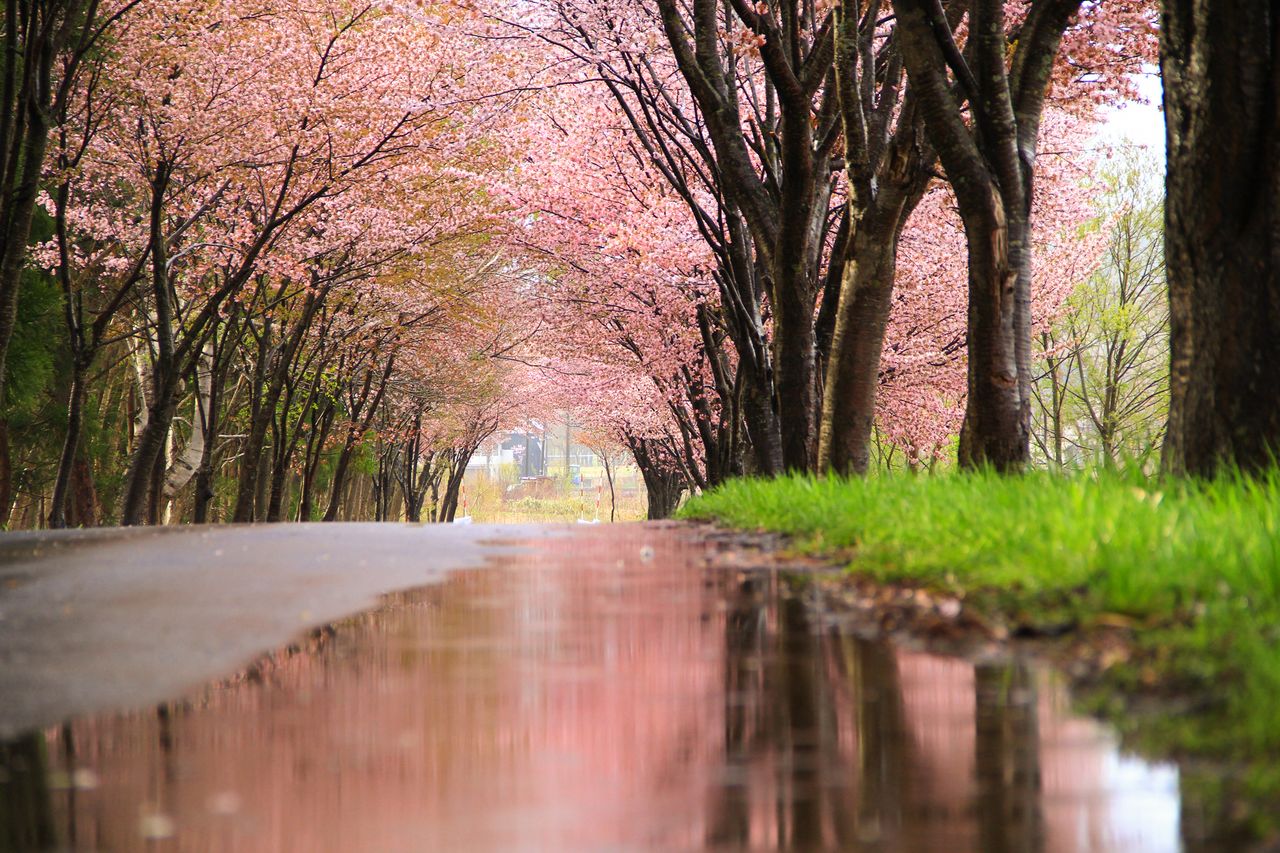
A walking path covered by an arch of spreading trees. (Photo courtesy of Iwakisan Tourist Association)
The Yonai Cherry Trees of Morioka, Iwate Prefecture
Best viewing: Late April to early May

The higan-zakura tree branches curve elegantly downward in full bloom. (Photo courtesy of Morioka Tourism and Convention Association
A designated National Tangible Cultural Asset, the Yonai Water Treatment Plant, located in the city of Morioka, Iwate Prefecture, is the oldest such municipal water treatment facility in Japan. To commemorate the completion of the water and sewer lines in 1934, nine of the drooping higan-zakura variety of cherry tree were planted on the grounds. There are presently 32 such trees here, giving the site its reputation for cherry blossom viewing.
This variety of cherry tree is distinguished by its deep pink flowers hanging down gracefully, as well as by the lateness of its blooming period. These trees are also preserved and maintained by city ordinance. As of this writing, there are approximately 50 trees on these grounds, when higan (rosebud) cherry trees of a more ordinary variety are included. When these trees are in full bloom, the sight is so magnificent that one could easily be forgiven for forgetting that one is in fact standing on the grounds of a water treatment plant.
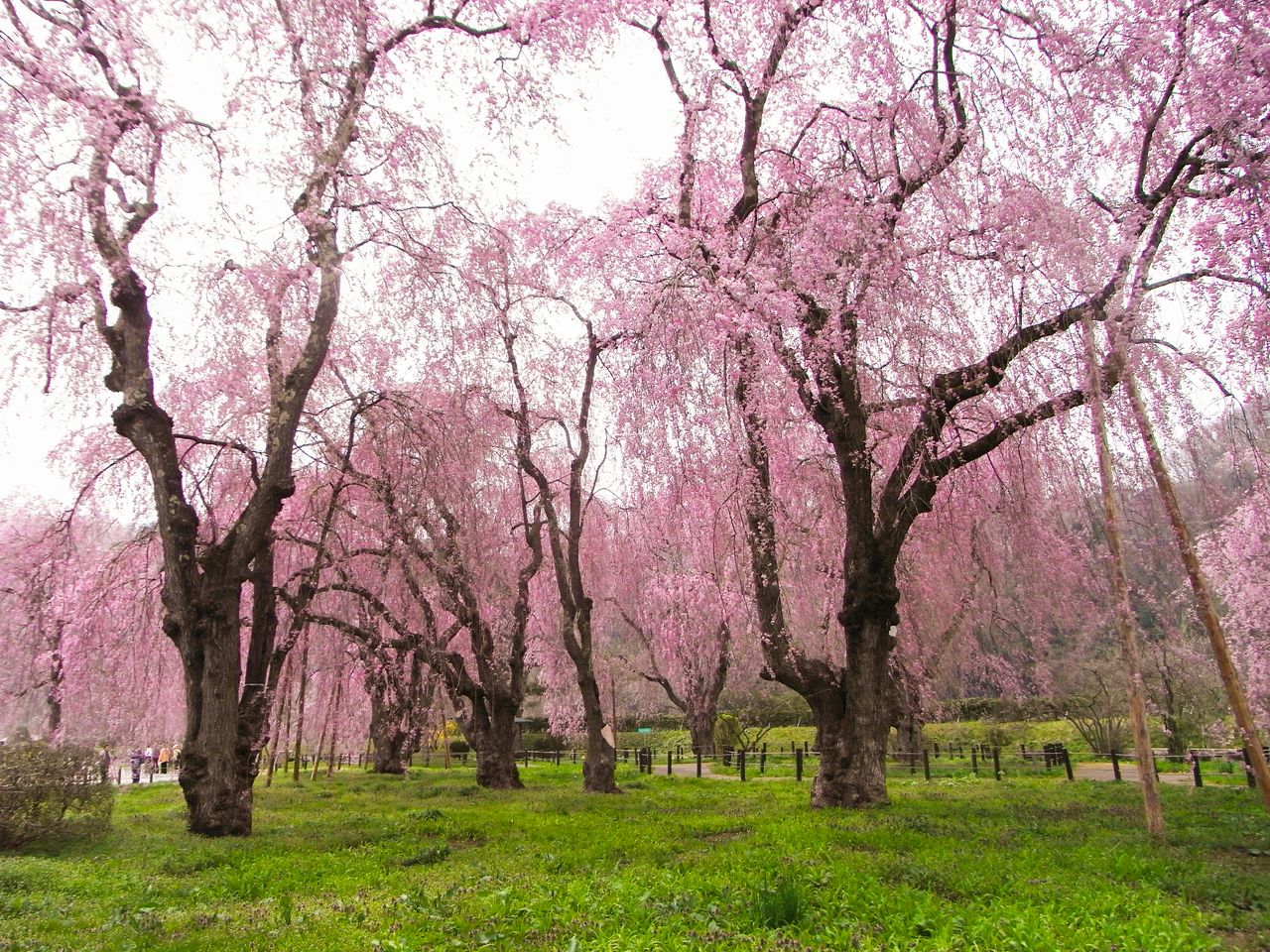
Seen from below, the shidare (weeping) cherry trees are very impressive indeed. (Photo courtesy of Morioka Tourism and Convention Association)
While thronged by some 30,000 cherry blossom viewers annually, Yonai Water Treatment Plant carries out its designed function to this day, and thus, the grounds are open to the public only when the trees are in full bloom. Exact dates are posted on the websites of the plant and the Morioka Tourist and Convention Association. Smoking, food and beverages, pets, and sitting on the facilities are all prohibited on the grounds. Take a stroll among these elegant cherry trees instead.

Strolling through the water treatment plant grounds, taking in the trees. (Photo courtesy of Morioka Tourism and Convention Association)
A Road Lined in Pink and Yellow: Ōgata, Akita Prefecture
Best viewing: Late April to early May

Pink cherry blossoms bloom as if overlaid on beds of yellow nanohana flowers. (Photo courtesy of the Ōgata Village General Affairs Division)
Running for some 11 kilometers along Prefectural Highway 298, the Sakura and Nanohana Road in the village of Ōgata, Akita Prefecture, lets visitors experience the combination of cherry trees and nanohana, a type of flowering rapeseed . There are three tree varieties on offer here: somei yoshino cherry trees with brightly tinted blossoms, yaezakura cherry trees with thickly overlapping petals on their blossoms, and benizakura, with light red blossoms.
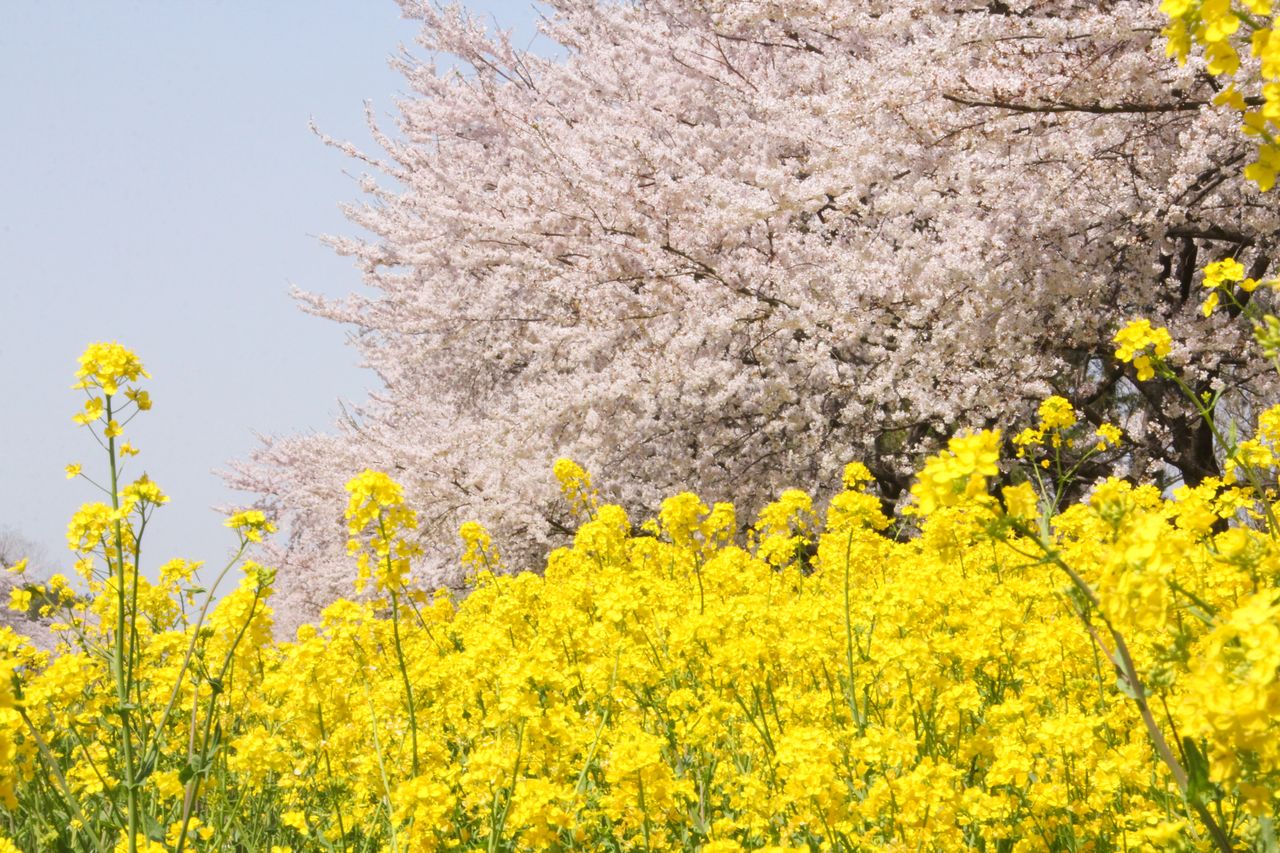
Cherries and nanohana combine in a vivid color combination that shouts “spring.” (Photo courtesy of the Ōgata Village General Affairs Division)
The vision of 11 hectares of rapeseed flowers and some 3,700 cherry trees in full bloom manages to be both flamboyant and charming at the same time. The pink and yellow blossoms contrasting with one another and the blue of the sky let observers know that spring has truly arrived in Akita.
The village holds an annual cherry blossom and nanohana festival during late April to early May, when both flowers are in bloom. Model railroads run through the fields, and a roadside shopping facility offers various Akita regional delicacies, including rice flour gyōza, with skins made from grain grown right there in the village.

Weather permitting, steam and electric model railroads let visitors of all ages see the mustard fields up close. (Photo courtesy of the Ōgata Village General Affairs Division)
(Originally written in Japanese. Reporting and text by Shoepress.)
tourism Aomori Tōhoku Akita Iwate cherry blossoms cherry blossom viewing flower